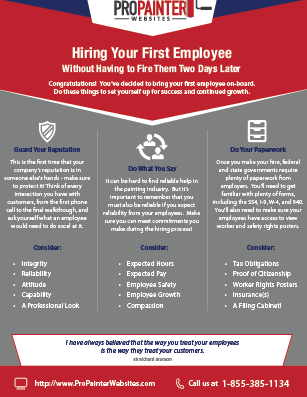Seasonal Factors In Business Outside Paint: Secret Insights You Ought To Be Aware Of
Seasonal Factors In Business Outside Paint: Secret Insights You Ought To Be Aware Of
Blog Article
Web Content Author-Aguilar Urquhart
When you're intending an industrial external paint job, seasonal aspects can make or break your outcomes. You'll wish to take into consideration exactly how temperature level and moisture impact paint application and drying times. Picking the best season can ensure your paint sticks properly and lasts longer. However which seasons are really the best for this type of job? Let's explore the crucial elements that can affect your job's success.
The Impact of Temperature Level on Paint Application
When you're planning a commercial exterior painting task, the temperature can dramatically impact exactly how well the paint adheres and dries.
Preferably, you intend to paint when temperatures range between 50 ° F and 85 ° F. If view 's as well chilly, the paint might not cure correctly, leading to concerns like peeling off or fracturing.
On the other hand, if it's also hot, the paint can dry out also rapidly, avoiding correct bond and resulting in an uneven surface.
You must additionally take into consideration the time of day; morning or late afternoon offers cooler temperature levels, which can be a lot more desirable.
Constantly inspect ceiling color same as walls for the details paint you're utilizing, as they frequently provide guidance on the optimal temperature array for optimum outcomes.
Moisture and Its Impact on Drying Times
Temperature isn't the only ecological variable that affects your business exterior painting job; moisture plays a significant role as well. High moisture degrees can slow down drying times drastically, affecting the total top quality of your paint work.
When the air is saturated with moisture, the paint takes longer to treat, which can lead to concerns like bad attachment and a higher risk of mildew growth. If you're repainting on an especially moist day, be prepared for extended delay times in between layers.
It's important to keep track of neighborhood weather conditions and strategy appropriately. Preferably, aim for humidity levels in between 40% and 70% for optimal drying.
Maintaining these consider mind guarantees your task remains on track and provides a long-term coating.
Best Seasons for Commercial Outside Painting Projects
What's the best season for your business outside painting jobs?
Spring and early fall are generally your best choices. During these seasons, temperatures are moderate, and humidity levels are often reduced, creating ideal problems for paint application and drying out.
Avoid summer season's intense heat, which can trigger paint to dry too swiftly, bring about bad attachment and coating. In a similar way, winter season's cool temperatures can hinder correct drying out and curing, running the risk of the durability of your paint job.
Go for days with temperature levels in between 50 ° F and 85 ° F for optimal results. Remember to examine the regional weather forecast for rain, as damp problems can wreck your project.
Preparation around these variables ensures your painting job runs efficiently and lasts longer.
Conclusion
In conclusion, intending your industrial external paint tasks around seasonal factors to consider can make a substantial difference in the outcome. By scheduling job throughout the excellent temperatures and humidity degrees, you'll make certain much better attachment and drying out times. Bear in mind to watch on local weather prediction and choose the correct time of year-- springtime and early loss are your best bets. Taking these actions will certainly assist you accomplish a durable and professional finish that lasts.
